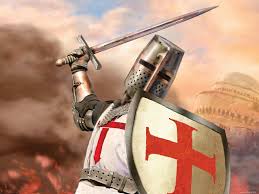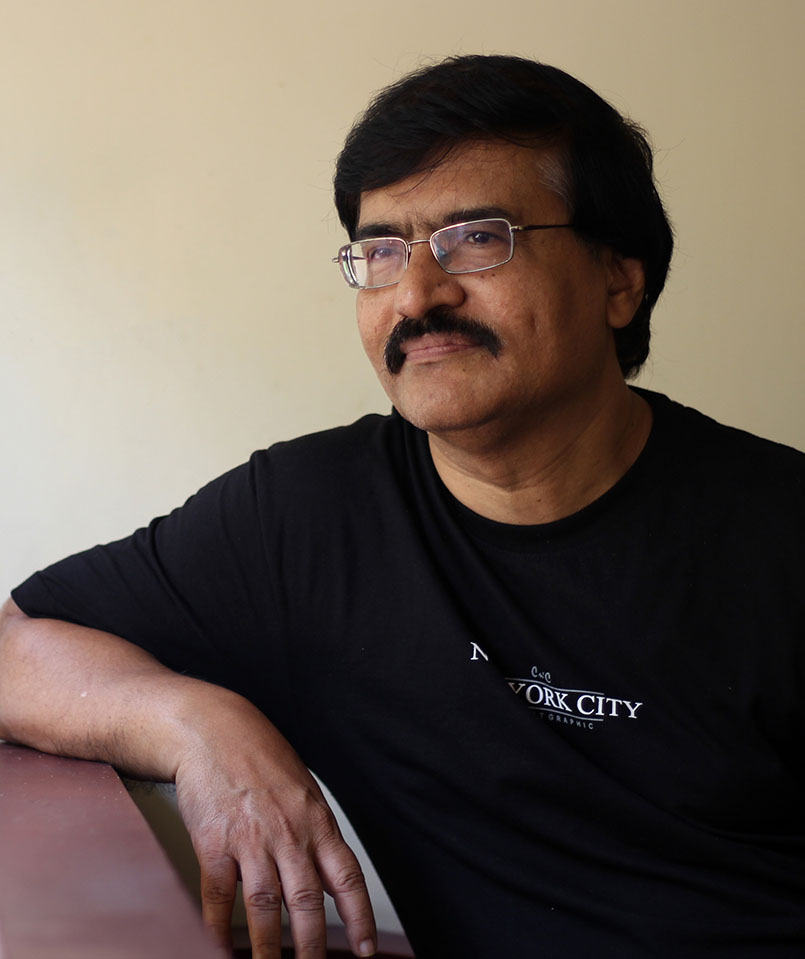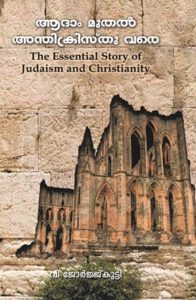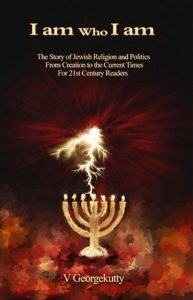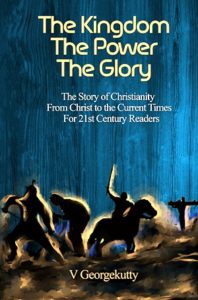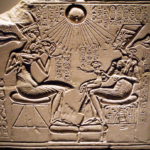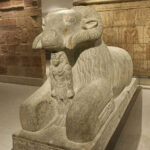“Murder, considered a crime when people commit it singly, is transformed into a virtue when they do it en masse.”
Introduction
Auschwitz, the death camp set up in Poland by the Nazis during World War-II (1939-1945), is considered the largest mass murder site in human history. Precise number of people killed in the camp is still debated. According to the US Holocaust Memorial Museum, at least 960,000 of the eleven to thirteen lakh Jews deported to that hellhole had perished within its walls. The Nazis had set up an estimated 20,000 similar camps across Europe to torture and kill people, primarily the Jews. The camps were equipped with systems that facilitated utmost efficiency in eliminating people on a massive scale so as to accomplish the “Final Solution” of wiping Jewish population off the face of the earth.
An estimated six million Jews were ruthlessly massacred in the course of the most horrendous ethnic cleansing in history undertaken by Adolf Hitler. It included 1.5 million innocent children.The world still does not apparently have a clear answer to the question why Hitler became instrumental to such a satanic act. Hitler was a Christian and a member of the Catholic Church. Hitler had not severed his ties with the Church. Pope Pius-II, the Pontiff of the time, had neither condemned nor distanced himself from the slaughter of innocent people for their ‘sin’ of being born Jews. It was obvious that the Jews were the victims of the violent anti-Semitism (intense hatred and prejudice against Jews) preached and practiced by European Christians…
In Part-I of this series of posts on ‘The Killer Instinct of Abrahamic Religions’, I had tried to provide an overview of the three Abrhamic Religions viz. Judaism, Christianity and Islam. Part-II had briefly dealt with Judaism. In this third part, I attempt a short review of the history of Christianity with focus on how this religion of love and sacrifice turned to violence and bloodshed. The series will conclude with the fourth part on Islam.
Christianity
Like the other Abrahamic religions, Christianity also took birth in the Middle East in the Mediterranean area known as Palestine. Jesus, whose followers later came to be called Christians, was born in a Jewish family. He had lived and died a Jew. The twelve disciples he had chosen to be with him were all Jews. (In fact the twelve disciples represented the twelve Israelite tribes discussed in Part-II of this series). To start with, the followers of the teachings of Jesus were also Jews. Thus, Christianity had started more or less as a breakaway faction of the Jews that did not subscribe to the orthodox Jewish view of strict adherence to the letter of the Mosaic Law irrespective of how it hurt the common people.
What the world knows about the life of Jesus comes from the four Gospels (Good News) of the New Testament Bible. But that is quite short and scanty. We have some information on his birth and his visit to the Temple at Jerusalem at the age of twelve. We find Jesus thereafter in about 27 CE when he had embarked up on his Gospel mission. Some three years later he was crucified by the Romans on the basis of the trumped up charges of sedition and blasphemy brought against him by the Jews.
In the times of Jesus, Palestine was under Roman control1. The Jewish King Herod the Great (73-4 BCE) ruled the territory as ‘friend and ally of the Romans’ when Jesus was born. Herod was a ruthless and paranoid ruler who had executed a couple of his own sons and at least one his ten wives. The Jews hated the Romans and their own King whose bloodline was not originally Jewish. They looked forward to the birth of the Messiah2 as foretold by their Prophets. The Jews had believed the Messiah would deliver them from the yoke of Roman dominance.
The Gospels say that Jesus was born in Bethlehem, a small town near Jerusalem. Three wise men (Magi) from the East3 saw a special star in the sky, which they believed had signalled the birth of a royal child. The Magi went to the palace of King Herod assuming that the child was born there. Not finding the child, the Magi took leave of the King to look for the child in Bethlehem. The King asked the Magi to return to the palace to tell him about the whereabouts of the child. Herod wanted to kill the child to eliminate any future threat to his throne.
The Magi had divine directions and did not return to the palace. Herod was furious. “…and he gave orders to kill all the boys in Bethlehem and its vicinity who were two years old and under, in accordance with the time he had learned from the Magi.” (Matthew 2:16). Thus, the messenger of love and non-violence became the cause of the bloody massacre of thousands of innocent babies, on his birth. But it was just a start…
In about 27 CE, Jesus started his Gospel mission. He presented himself as the Messiah. The Jewish concept of Messiah was modelled on King David – a brave military leader and conqueror who would liberate the Jews and establish an earthly kingdom of Israel. But, Jesus told that his Kingdom did not belong to this world. Instead, Jesus said that he had come to save people from their sorrows, sicknesses and sins. He promised a blissful afterlife with him for those who believed in him and lived a life in accordance with his Gospel. Obviously, Jesus was not the Messiah that fitted the formula of the Jewish traditions. The Jewish leadership was angry and accused Jesus of blasphemy. Under the Jewish law, the punishment for blasphemy was death. The accusers also tried to add charges of sedition to strengthen their case.
Jesus mostly worked among the poor, oppressed and the marginalized sections of the Jews of Galilee. Although Jesus remained an ardent Jew, he did not subscribe to the idea of literal enforcement of the Scriptural Laws. Jesus believed that laws were for people and not people for law. He believed that any law, that did make allowances for the circumstances of the people and not implemented in a spirit of love and compassion for the offender, would be bad and dangerous. He exhorted people to love one another and demonstrate it in their actions. Jesus lived poor. He owned nothing on this earth. Jesus once told someone who wanted to follow him, “Foxes have dens and birds have nests, but the Son of Man has no place to lay his head” (Luke 9:58). He loved the lowly and embraced the lepers. He reached out to the people that the society had condemned and kept away.
Jesus spoke vehemently against the two rival Jewish ruling classes – the Sadducee and Pharisee4. The Jewish leaders hated Jesus for his mingling with what they termed sinners and tax collectors. Jesus criticized them for their fundamentalist views and their blind adherence to rituals. Jesus minced no words in objecting to the tendency of the Jewish ruling class to terrorize the ordinary citizens in the name of religious edicts. He exposed their hypocrisy of living a lazy and lavish life.
The Gospel mission of Jesus lasted for just around three years. Eventually, one day he entered the Jerusalem Temple at the head of a procession of ordinary Palestinian folks. At the Temple, Jesus drove out all who had converted the Temple spirituality into a profane and profiteering business venture. He said to them, “It is written, ‘My house shall be called a house of prayer,’ but you make it a den of robbers” (Matthew 21:13).
Both the Roman and Jewish authorities were alarmed by his actions and the mass appeal he enjoyed among ordinary Jews. Jesus was turning a threat to their material interests. So a conspiracy was hatched by the Jewish leadership to eliminate Jesus. The charge of treason (against the Roman rule) and blasphemy were brought against him. He was arrested and tried first by the Jewish Council Sanhedrin. Since the Jewish authorities would not be satisfied with anything short of death for Jesus, they brought him before Pontius Pilate5, the Roman Governor.
Pilate, ruthless though he was, did not want to get involved in the case against Jesus. So he tried to shift the trial to Herod Antipas, the son of Herod the Great and the ruler of Galilee, since Jesus hailed from Galilee. But Antipas sent him back to Pilate. Pilate confessed at the end of the trial that he could find no guilt in Jesus. But as a representative of a foreign regime, he had his political compulsions to keep Jewish political class in good humour. So Pilate took water, washed his hands in front of the Jewish mob and said, “I am innocent of this Man’s blood; see to that yourselves”. The crowd cried in response, “His blood shall be on us and on our children!” (Matthew 17: 24-25)6. Pilate delivered Jesus into the hands of the mob. And Jesus was tortured and put to death by crucifixion, a Roman form of punishment.
The disciples of Jesus believed that Jesus had resurrected. Many had visions of him. They continued as Jews, worshiping at the temple and living in line with the teachings of the Torah (The first five books of the Old Testament Bible that lays down the basic Jewish Laws). They differed with the Jewish establishment essentially in their belief that Jesus was the ‘Messiah’. But when the followers of Jesus started bringing in non-Jews into the new faith, bitter disputes erupted between the traditional Jews and the followers of Jesus. By 50 CE, the Jews disowned the followers of the Gospel of Jesus. And the persecutions started.
Jewish groups went after the believers of Jesus with authorization given to them by their leaders, to catch, torture and kill them. Paul, a Jew and a Roman citizen, was one of those who led such a campaign. He was born to a wealthy family and was well educated unlike the twelve disciples of Jesus who were mostly illiterate fishers from Galilee. Paul had gone to Damascus chasing the followers of Jesus. But, in Damascus, life changed for ever for Paul. With him the prospects of Christian faith too changed. From an enemy of the Gospel, Paul turned its most ardent Apostle.
But for Paul, the Christian faith would have never reached the non-Jew world far and near. He had the advantages of being educated and born a Roman citizen. He made several missionary journeys, spreading the Gospel and establishing Churches. One of the first such churches was the Church at Antioch.“…and the disciples[of Jesus] were first called Christians in Antioch“ (Acts 11:26). Paul was arrested and imprisoned several times. Although the Bible does not say what happened to Paul in the end, it is believed that he became a martyr for the sake of his faith.
There was no scope for violence in Christianity. Jesus had taught, “Blessed are the peacemakers, for they will be called children of God… If anyone slaps you on the right cheek, turn to them the other cheek also. And if anyone wants to sue you and take your shirt, hand over your coat as well. If anyone forces you to go one mile, go with them two miles… love your enemies and pray for those who persecute you…” (Matthew 5). The Gospel permitted no ‘holy wars’ for the extermination of the so-called enemies of God.
Paul preached that Christianity was the religion of the spirit that considered salvation as the liberation of the spirit from sin and death. He taught that it was meaningless to fight for a sake of the fruits of this material world. The sinners were in ‘exile’, not from any holy land but from Christ and the ‘Kingdom of God’. Paul tried to appropriate the tenets of Judaism into the Christian faith only to the extent of fulfilling the purpose of the Christian faith.
Christians believe that Jesus was indeed the Messiah foretold in the Old Testament Bible prophesies. They interpreted the Old Testament prophets to suit their version of Messiah. Also the Christians incorporated the Old Testament, which is essentially the Jewish Scripture, as part of their own Holy Bible7. Although important elements of the Christian faith are deeply rooted in Judaism, Christians eventually came to see Jews as renegades for refusing to recognize Jesus as Messiah.
Jesus had told his disciples that he would return to earth a second time. He had said, “…for I go to prepare a place for you. If I go and prepare a place for you, I will come again and receive you to myself, that where I am, there you may be also” (John 14:2-3). For Christians of the first century, this Second Coming of the Messiah was critical. In the first Epistle to the Thessalonians written some time in 52 CE, Paul had promised that the Second Coming of Jesus would happen within his own lifetime. But Paul died without witnessing the Second Coming. This raised the need for an explanation for the delay in Christ’s return.
It is believed that attempts to explain the delay were made in two New Testament books, written, probably, after the death of Paul. These books are the Revelation and the second Epistle to the Thessalonians. In the book of Revelation, the author is dealing with the matter based on Jewish apocalyptic (Ultimate doom) traditions. The most known and influential scripture of the early Jewish apocalypses is the last part of the biblical Book of Daniel (Chapters 7–12), written in about 167 BCE.
‘Daniel’ recounts a series of visions. In one such vision he sees the arrival of a succession of four terrible beasts, evidently representing earthly persecutors (of the chosen people of God). The author of the Book of Revelation also writes of a great Beast that would crawl out of the abyss and take up residence in the Temple (in Jerusalem). The author of second Epistle to Thessalonians explains that the Second Coming of Jesus would not occur until the ‘Great Revolt’ or ‘Great Apostasy’. (Apostasy is a situation of opposing or abandoning of faith). In view of these, the Christians believed that a Rebel would rise and establish himself in the Temple in Jerusalem just before the Second Coming of Christ. That Rebel would really be the enemy of God but would even claim himself to be God.
The idea of the Beast found in the Book of Revelation looked more appealing to the Christian thinkers and therefore the term Antichrist (meaning the adversary of Christ) came to be used to represent the Beast. Obviously, the faithful looking forward to the Second Coming of Messiah started scanning Jerusalem to spot the Beast (The Antichrist) that would occupy the Temple and wage the bloody final war with Christ and his followers.
The narratives of the Second Coming were full of war, death and destruction. This influenced the Christian thought process. And by the end of the first century, ideas of violence and bloodshed seeped into the peaceful religion preached by Jesus and Paul. This development also produced the movements of Martyrdom and Monasticism in the Christian faith. The persecution of Christians by various regimes during its early days accelerated these movements.
Shortly after Christianity started spreading across Europe, the persecutions commenced. Thousands of Christians were brutally tortured and put to death by the Roman authorities since they viewed Christian faith as a political threat to the Roman Empire. The pain and trauma of Christians so suffering in full public glare remained etched into the conscience of the Christians. They believed that the world was against the true Christian faith of peace, love and compassion. Christians suddenly felt insecure. The consequence of this deep sense of insecurity was the emergence of the aggressive cult of martyrdom.
The early Christians remembered Jesus saying,“There is no greater love than to lay down one’s life for one’s friends” (John 15:13). Christians started believing that laying down their lives (martyrdom) was the best demonstration of their love for Jesus. They also believed that by seeking death, they were taking part in the cosmic battle with the evil forces as indicated in the apocalyptic literature of their faith. Thus, Christians started aggressively seeking voluntary martyrdom. They went to the Roman authorities, confessed their faith and demanded that they be put to death…
Eventually, the Roman Emperor Constantine I (CE 280-337) became a Christian. The first ‘holy war’ of Christianity probably took place in October 312 CE when Constantine saw a vision of the cross in the sky with this inscription “in hoc signo vinces” (‘in this sign you will win’). Constantine trusted the vision and had the cross, inscribed on the armour of his soldiers. And Constantine won the battle against the pagan army that was many times bigger than his own forces. He believed that it was a miraculous victory given to him by Christ’s cross against pagan enchantment8.
Emperor Theodosius I (CE 379 – 395) made Christianity the official religion of the Roman Empire. He decreed that all citizens should be Christians. Suddenly persecutions stopped. The door to martyrdom for the faithful shut itself tightly down. Now, Christians had to face the reality of living in what they considered an evil and violent world.
The radical Christians could not stand such a prospect. So, they fled to the wilderness. Christian teachings were reinterpreted to prove that it was impossible to sustain a truly Christian life in a world filled with vice and violence. And this gave birth to Christian Monasticism. It started in the Middle East and would reach Europe by the fifth century. Western Christians soon saw Monasteries as fortresses of faith in a godless world. The monks were considered as warriors in a bloodless holy (spiritual) war against evil.
The Barbarian invasions destroyed the Roman Empire in Europe. This was followed by invasions by Norsemen, Muslims and others in the ninth and tenth centuries. Life once again turned perilous for Christians. As their sense of danger mounted, the seeds of aggression that lay dormant within the Christian psyche (thanks to its Hebrew ancestry) started sprouting. Yet, they refused to eschew their pacifistic ways.
But Western Europe was facing the onslaught of repeated invasions. The Christian leadership felt that pacifism of the Gospel of Jesus was a sure recipe for disaster for Christianity in a changed world of unceasing violence. So the Latin theologians started looking for a way out of the dilemma of ‘loving ones enemies in the face of invasions and massacres’. And they came up with the idea of a ‘Just War‘9.
The explanation for a Just War was that while Christians were prohibited from wars against other Christians, they could always take up arms against the ‘infidels’. They had the examples of Joshua and King David before them. Those heroes of the Old Testament Bible had mercilessly massacred, innocent people outside their faith, in thousands. And most of those manslaughters were ordered by their God. So, there was nothing sinful about violence for the right reason. Such thinking led to the concept of ‘Medicinal Christian Violence’. The idea behind this concept was that it might be necessary to use violence to correct people who were ignorant or were being misled. It was similar to a parent chastising his own child for the good of the child. Even God had chastised His chosen people every time they went astray. Thus, medicinal Christian violence was essentially murder out of love or murder triggered by a deep desire to save.
But people like St Augustine insisted that self-defence alone could not justify violence since it could be inspired by hatred. But most Christians felt that they would not survive as Christians unless they take up arms against the ‘infidels’. They started believing that it was right and proper to use violence (and thus war) to spread the faith and to exterminate its opponents. It was argued that whether violence was good or bad depended on its goal. Thus, the powder keg of violence was primed for the Christian faith. Only a ‘just goal’ was necessary to ignite it. The conquest of Jerusalem by Muslims provided such a goal. Its aftermath was the Crusades – the first massive Christian violence against non-Christians.
The Crusades
A third monotheistic religion emerged in the deserts of Hejaz in the Arabian Peninsula (Now part of Saudi Arabia) during the seventh century. This new faith was Islam. (Part-IV carries a discussion on Islam). The Christians were shocked and dismayed to see how Islam was spreading like wild fire through the Middle East and North Africa. They saw how Christian nations were conquered and their holy places vandalized by the Muslims. The death and destructions that jihad had unleashed on the Christians during the period of its vicious run all over the world filled the Christian hearts with hatred for Islam.
Jerusalem was a holy land for the Jews. It was part of their ‘Promised Land’, and the capital city of their great hero King David besides the city of their ‘Holy Temple’. Jerusalem was also holy soil for Christians since Jesus was a Jew and he was tried and crucified in Jerusalem. The Holy Sepulchre too was in Jerusalem (believed to be the burial chamber in which Christ’s body lay during the period between burial and resurrection).
After the emergence of Islam, Jerusalem became a holy place for the Muslims too. The Muslims believed that the Prophet had made a mystical night flight into Jerusalem in 620 (two years before hijra). He had landed at the site of the old Jewish Temple (Temple Mount) from where he had ascended to heaven. In heaven, he had spoken with Moses and Jesus. This vision of the night journey established the Muslim connection with the other two Abrahamic religions – Judaism and Christianity. It also made Jerusalem the third Holy City for Islam after Mecca and Medina.
In the year 638 CE, the gates of Jerusalem were opened wide and Caliph Omar10triumphantly entered Jerusalem riding on a white camel. He immediately proceeded to the Temple Mount and kneeled down to pray. Then he entered the Church of Holy Sepulchre. The call for Islamic Prayer had come right when the Caliph was inside the Church. The Christian Magistrate of Jerusalem (obviously in fear), who was escorting the conquering Caliph, suggested that the Caliph pray inside the Church. But the Caliph did not since he knew that a Mosque would be erected at the spot where he would pray. It would have led to the demolition of the Holy Sepulchre. The Caliph did not wish it. He, therefore, came out and knelt down at a spot opposite to the Holy Sepulchre11.
The Book of Daniel had prophesied that during the days of apocalypse (The ultimate doom), the Abomination of Desolation would enter the Temple in Jerusalem. It said, “And forces shall stand on his part, and they shall profane the sanctuary, even the fortress, and shall take away the continual burnt-offering, and they shall set up the abomination that maketh desolate”, (Daniel 11:31).
The Western Christians thought that Caliph Omar was the Antichrist. Consequently, Islamic conquers (jihad) became a fearsome obsession for the Western Christians. In short, the seeds of Christian violence against Islam were sown the moment the gates of Jerusalem opened to admit Caliph Omar to take the holy city under Islamic rule. As time passed, Muslim Turks started capturing Christian territories in the Eastern parts of Europe too. The Christians had no idea how to counter the onslaught of Islamic Jihad. And Pope Urban-II, the then head of the Catholic Church, stepped in with a solution.
Christian Pilgrims from Western Europe had been journeying to Jerusalem for a long time. Those pilgrimages had always been a peaceful journey to visit the holy sites of their holy city. But in 1095, Pope Urban-II decided to arm the pilgrims. The Pope wanted the armed ‘pilgrims’ to the ‘holy city’ to first drive out the Turks occupying the Eastern part of Europe and then proceed to Jerusalem to liberate the ‘holy city’ from the control of the Muslims. Thus, the Pope converted a pious and peaceful Christian pilgrimage into a bloody and violent killer expedition. With it the spirit of armed aggression entered the hearts of ordinary Western Christians.
Addressing the armed pilgrims, Pope Urban II said, “Let this be your war-cry in combats, because this word is given to you by God. When an armed attack is made upon the enemy, let this one cry be raised by all the soldiers of God: “Deus vult! Deus vult!” (God wills it! God wills it!) …Whoever shall determine upon this holy pilgrimage and shall make his vow to God to that effect and shall offer himself to Him as a living sacrifice, holy, acceptable unto God, shall wear the sign of the cross of the Lord on his forehead or on his breast.” Because of the cross that the pilgrim warriors wore, the expedition came to be called Crusade. The Pope promised the crusaders absolution for their sins and protection for their families and properties.
The first Crusade commenced it journey in 1095. And the crusaders killed the ‘infidels’ all the way to the Holy Land. On 15.07.1099, they entered the gates of Jerusalem and conquered the holy city. More than 60,000 of the Jewish and Muslim population of Jerusalem were butchered by the Crusaders. In the words of one witness, the carnage that happened in front of Solomon’s temple was such, “that our people were wading ankle-deep in the blood of our foes”, and after that “happily and crying for joy our people marched to our Saviour’s tomb, to honour it and to pay off our debt of gratitude”12. Pope Urban-II died before the news of the Christian Conquest of Jerusalem reached him. Estimates suggest that a million people perished in in the first Crusade alone. Altogether, some twenty million people died as consequence of the many Crusades covering three centuries.
More Christian Violence
The Crusades are considered the most gruesome and mindless act of violence spearheaded by the Church. But that was only the beginning of the massive Christian armed aggression targeted mostly at the so-called ‘infidels’.
However, the Church was no less brutal towards Christians who disagreed with its official dogmas. “Anyone who attempts to construe a personal view of God which conflicts with Church dogma must be burned without pity“, said Pope Innocent-III13. The spirit of extreme violence oozing in those words needs no comments.
The instances of Church savageries against hapless humans had been many. However, we do not have space here to deal with the matter in any detail. Therefore, I would conclude this post my making very brief mentions on a few of such instances of violence by the Church against people within the Christian fold.
Crusade against the Cathars
The medieval Christian sect of the Cathars (Albigenses Christians) in southern France had viewed God as a being of pure spirit. They believed that Jesus was an angel with only a phantom body, and the accounts of him in the New Testament were to be understood allegorically. This was against the teaching of the Catholic Church. “On November 17, 1207, Pope Innocent III wrote to King of France (King Philip Augustus) to take an army to fight the heretics. Thus, for the first time in Europe, a Pope was calling upon Christians to kill other Christians. Innocent was setting a precedent for a new kind of holy war that would become an incurable disease in Europe. It looked forward to the wars and persecutions waged by Catholics and Protestants against one another, to the wars of religion in the seventeenth century and the bitter, endless struggles in the Northern Ireland today….” (Holy War – Karen Armstrong). The King was reluctant to obey. In 1209, Pope Innocent III launched an armed crusade against the Cathars. When the besieged city of Beziers fell, soldiers reportedly asked their papal adviser how to distinguish the faithful from the infidel among the captives. The response was, “Kill them all. God will know his own.” Nearly 20,000 people were slaughtered. Many were first blinded, mutilated, dragged behind horses, or used for target practice.
The Inquisitions
The Crusades against Cathars led to Inquisitions, a violent move of the Church to identify and kill people it considered as heretics or infidels. The Inquisition was a court and a process instituted by the Roman Catholic Church to discover and punish disbelief and wrong belief. These courts wielded immense power in medieval and early modern times. Through the Inquisitions, the Church not only tortured and murdered people, but also brought the wealth of the victims under the ownership of the Catholic treasury. Screaming victims were stretched, burned, pierced and broken on fiendish pain machines to make them confess to disbelief and to identify fellow transgressors14.
The Witch Hunts
In the 1400s, the Inquisition shifted its focus to witchcraft. Priests tortured thousands of women into confessing that they were witches who flew through the sky and engaged in sex with the devil. Those confessed were burned or hanged for their confessions. Witch hysteria raged for three centuries in a dozen nations. In some cases, whole villages were exterminated. Estimates of the number of women executed vary from 100,000 to 2 million. The witch craze of the Catholic Church was religious insanity at its worst.
The Thirty Years’ War
The Thirty Years’ War began in 1618 when Protestant leaders threw two Catholic emissaries out of the window of the upper story of a building in Prague, into a dung heap below. War flared between Catholic and Protestant princedoms, drawing in supportive religious armies from Germany, Spain, England, Holland, Denmark, Sweden, France and Italy. Three decades of combat turned central Europe into a wasteland of misery. One estimate states that Germany’s population dropped from 18 million to 4 million. In the end, nothing was settled, and too few people remained to rebuild cities, plant fields, or to take care of education…
Conclusion
Elie Wiesel is a Jewish writer, teac her and activist who had won the Nobel Peace Prize in 1986. At the age of 15, Wiesel along with his entire family was captured by the Germans and taken to Auschwitz. Only Wiesel and one of his sisters had the good fortune to come out alive from the camp.
her and activist who had won the Nobel Peace Prize in 1986. At the age of 15, Wiesel along with his entire family was captured by the Germans and taken to Auschwitz. Only Wiesel and one of his sisters had the good fortune to come out alive from the camp.
Wiesel describes how a child with the face of a ‘sad eyed angel’ was hanged to death in the camp once. The little boy had quietly climbed the gallows. His innocent face appeared soft and serene. It had taken nearly an hour for that child to die. Thousands of people were forced to watch that gruesome act. One of the prisoners who stood behind Wiesel muttered in agony, “Where is God? Where is He?” Wiesel repeated it to himself, “Where is He?” and answered, “Here He is – He is hanging from the gallows”.
Perhaps, when people kill in the name of god, they might be actually killing their gods. The loving and forgiving God preached by Jesus would never be on the side of the killers irrespective of the justifications they discover for their wars. Yet, the Church had encouraged and often actively participated in the killing of innocent millions in the name of a loving and compassionate god. Such manslaughter by Christians were not confined to the dark and fearsome Middle Ages. It happened also in the enlightened centuries of colonialism and evangelism. The pity is that even today, such murders continue in various forms and formats…
Notes
1Under Roman rule, the Jewish people had the freedom of self-government and could maintain their own religious practices and traditions. But all such freedoms were subject to the authority of Rome. Thus, the Jewish court system called Sanhedrin had authority over the Jewish people. But Sanhedrin could not award death penalty. That authority was vested with the Roman government acting through its empowered officers.
2Messiah: The Hebrew term “Mashiach” literally means “the anointed one,” and refers to the ancient practice of anointing kings with oil when they assumed the throne. The Mashiach is the one who will be anointed as king in the End of Days. The Messiah of Jewish faith was to achieve the ingathering of the exiles; restoration of the religious courts of justice; the ending of wickedness, sin and heresy; rewarding of the righteous; rebuilding of Jerusalem; restoration of the line of King David and restoration of Temple service. The notion of ‘Messiah’ as an innocent, divine or semi-divine being who will sacrifice himself to save us from the consequences of our own sins is a purely Christian concept. The Mashiach of Jewish faith is not a ‘Saviour’ in the Christian sense.
3The wise men from the East were believed to be pseudo scientists and astronomers, probably from Babylon or Persia.
4The Pharisees were the teachers of law who insisted on strict adherence to the laws and traditions of the Hebrew Patriarchs. The Sadducees were aristocrats. They held powerful positions, including that of chief priests and high priest, and had majority of the 70 seats of the Sanhedrin. The fundamental difference between the Sadducees and the Pharisees is the interpretation of the Torah (The Law of Moses carried in the five first books of the Bible). The Sadducees maintained that the only way for truly pious behaviour was to live according to the commandments in the written Law. The Pharisees, on the other hand, taught that the ‘written Torah’ was to be supplemented with ‘the oral Torah’, the interpretation of the written Law by the Pharisee teachers, the rabbis. The Sadducees considered this an almost blasphemous act, because it seemed to deny the majesty of the Law of Moses. However, both camps were united in objecting to the teachings of Jesus and his claims that he was Messiah.
5After Herod’s death in 04 BCE, the Roman Emperor Augustus agreed to honour the King’s will and divide Herod’s kingdom among his sons. Thus, his son Herod Antipas was made the ruler of Galilee and the east bank of the Jordan. His brother Philip was given the Golan Heights in the northeast. Herod Archelaus, another son of Herod became the kingof Samaria and Judaea. In 6 CE, The Romans removed Herod Archelaus from authority and exiled him to Gaul. The Romans then formed the Province of Judea by uniting the three territories Judaea, Samaria and Idumaea and placed it under the direct control of the Romans to be administered by its representative. This Roman representative (Governor) had the designation Prefect that was later changed as Procurator. Pontius Pilate was the Roman Governor (Prefect/Procurator) of the province of Judea (26-36 CE) at the time of the trial of Jesus.
6This Jewish response, perhaps, makes it easy for many Christians to interpret the killing of the Jews as an act of divine retribution and a disaster brought onto their heads by their ancestors. May be, for Hitler too, the Holocaust was a ‘Holy War’ against the killers of Christ.
7Christians with their claims to the ancestry of King David to Jesus considered themselves the new chosen people of the Abrahamic God (The New Israel).
8We will find an identical incident viz. the battle of Badr that became a turning point in the history of Islam. This would be discussed in the next (final) part on Islam.
9The early church (the first 300 years) was strongly pacifist. Origen said that Christians “do not go forth as soldiers“. Tertullian wrote “only without the sword can the Christian wage war: for the Lord has abolished the sword.” Clement of Alexandria wrote “…he who holds the sword must cast it away and that if one of the faithful becomes a soldier he must be rejected by the Church, for he has scorned God.” This changed rapidly in the time of Constantine – the Council of Arles in 314 said that to forbid “the state the right to go to war was to condemn it to extinction”. Shortly thereafter, Christian philosophers began to formulate the doctrine of the Just War.
10Caliph Omar (Umar ibn Al-Khattāb) was one of the most powerful and influential Muslim caliphs in history. He had succeeded Abu Bakr as the second caliph of the Rashidun Caliphate. Caliph Omar was assassinated on November 7, 644 CE in Medina, Saudi Arabia.
11Later, a Mosque dedicated to Caliph Omar would come up at that spot outside the Church of the Holy Sepulchre. Incidentally, two more Mosques would be built in Jerusalem. One was built on the Temple Mount to mark the Muslim conquest of Jerusalem. And Mosque al-Aqsa was built there in the memory of the Prophet’s night flight into Jerusalem.
12The Archbishop of Tyre who was an eyewitness wrote, “It was impossible to look upon the vast numbers of the slain without horror; everywhere lay fragments of human bodies, and the very ground was covered with the blood of the slain. … the spectacle of headless bodies and mutilated limbs strewn in all directions that roused the horror of all who looked upon them. Still more dreadful was it to gaze upon the victors themselves, dripping with blood from head to foot, an ominous sight, which brought terror to all who met them. It is reported that within the Temple enclosure alone about ten thousand infidels perished.”
13For a long period, the Church had wielded authority over Emperors and Kings since the Church heads presented themselves as the earthly representative of god. People were deeply in fear of the curse of the Church heads. The universe belong to God. The Popes, as the self-appointed earthly representatives of the divine, issued decrees vesting discovered and yet to be discovered lands to the earthly rulers who kept them in luxurious comfort and good humour besides obliging to fill the deep coffers of the Vatican.
14Death tolls are given by historians such as Will Durant, who, in The Reformation (1957), cites Juan Antonio Llorente, General Secretary of the Inquisition from 1789 to 1801, as estimating that 31,912 people were executed from 1480-1808. He also cites Hernando de Pulgar, a secretary to Queen Isabella, as estimating 2,000 people were burned before 1490. Philip Schaff in his History of the Christian Church gave a number of 8,800 people burned in the 18 years of Torquemada (The Spanish Grand Inquisitor). Matthew White, in reviewing these and other figures, gives a median number of deaths at 32,000, with around 9,000 under Torquemada. R. J. Rummel describes similar figures as realistic, though he cites some historians who give figures of up to 135,000 people killed under Torquemada. This number includes 125,000 asserted to have died in prison due to poor conditions, leaving 10,000 sentenced to death. (Death rates in medieval and early modern prisons were generally very high, thanks in part to inadequate sanitary conditions and a poor diet.)
Click the Links below to read the other parts of this series:
